Recent Articles
Popular Makes
Body Types
2021 Acura RDX Road Test and Review
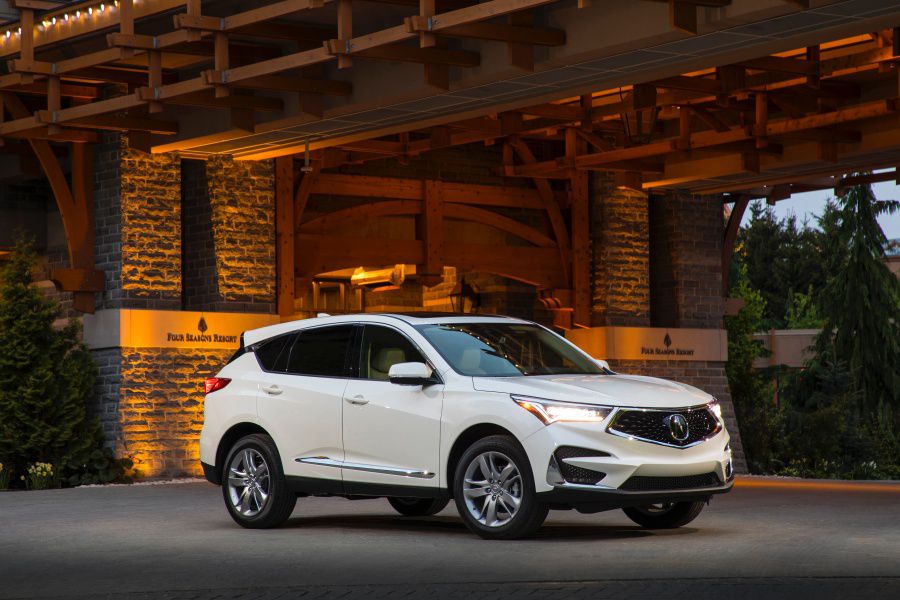
2019 Acura RDX Advance ・ Photo by Acura
Acura is atypical in that it is difficult to define. A cut above parent company Honda’s mainstream models, Acuras are more sophisticated and, as of late, stylish while offering higher levels of content, quality, and performance capability. For example, the 2021 Acura RDX is a compact SUV that shares nothing with Honda’s popular CR-V, a change from the past when the two models sprang from the same roots.
At the same time, and despite the existence of the six-figure NSX hybrid sports car, Acura isn’t considered a full-fledged luxury automaker. Aside from the NSX, Acura offers two cars, two SUVs, and that’s it. The company’s bench simply isn’t deep. But as Bob Dylan penned almost 60 years ago, the times they are a-changin’. Starting in the summer of 2021, Acura will return the Type S nameplate to true twin-turbocharged performance variants of the redesigned 2021 TLX and 2022 MDX. And rumor has it that a plug-in hybrid version of the MDX is also planned. While we wait for these new Acuras to arrive, the brand’s most popular model, the 2021 RDX, proves itself a compelling choice in one of the hottest market segments in America: the upscale compact crossover SUV.
2021 Acura RDX Prices and Trim Differences
When you go shopping for a new 2021 Acura RDX, you’ll find five different versions on sale. Each is available with Acura’s torque-vectoring Super Handling All-Wheel Drive (SH-AWD) for an extra $2,000. The standard RDX ($38,200) is well equipped, but it doesn’t come with a blind-spot warning system or rear cross-traffic alert. For those two important safety features, you need the RDX Technology ($41,100), which also has unique wheels, leather seats, navigation, and a premium sound system.
Next up is the RDX A-Spec ($44,100), which bolts on 20-inch wheels, revised styling, blacked-out trim elements, a high-end sound system, ventilated seats, and other cosmetic upgrades. The RDX Advance ($46,000) adds an adaptive damping suspension, 16-way power-adjustable front seats, heated rear seats, a heated steering wheel, a head-up display, a surround-view camera, and a hands-free power liftgate. New for 2021, the RDX PMC Edition ($51,000) blends Advance and A-Spec content with an exclusive Thermal Orange paint job. Only 360 examples will be produced, hand-built in the same factory that manufactures the Acura NSX. For this review, we tested an RDX A-Spec with SH-AWD and extra-cost paint. It cost $47,625, including the $1,025 destination charge.
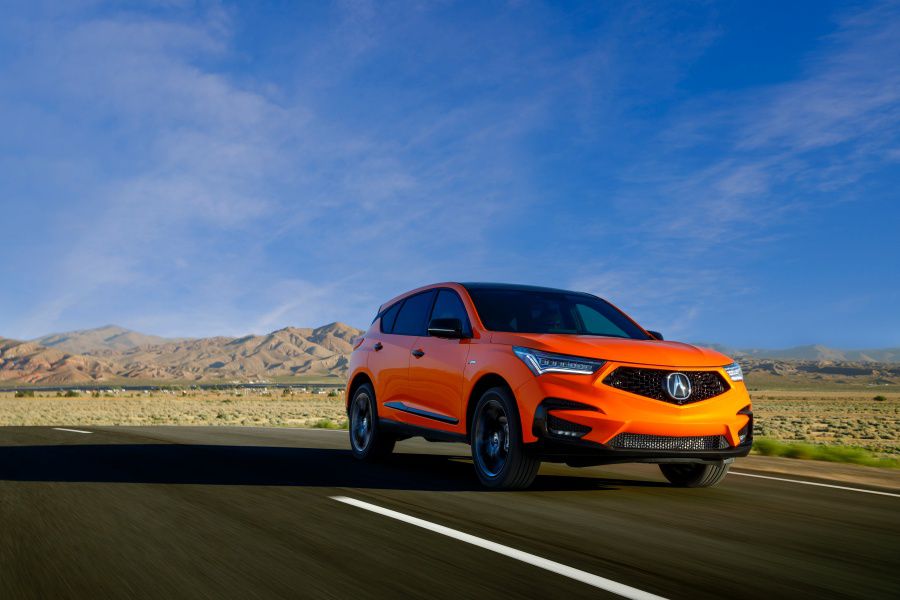
Photo by Acura
Good Looks, Questionable UX
The current-generation RDX was the first Acura to put the company’s new Precision Concept styling themes on the road, so it represents an apex of sorts for the brand’s design philosophy. Led by the now-familiar Diamond Pentagon grille and Jewel Eye LED headlights, the RDX A-Spec looks like it means business with dark gray wheels, blacked-out trim, and oversized round exhaust outlets. However, it doesn’t deliver any increase in performance. Instead, it just looks good.
Interior quality is high. Materials, textures, and tones are all a cut above what you’d find in a Honda. The control layout, however, emphasizes design over the user experience. The RDX’s tiered waterfall of a center control panel certainly looks unique, but it does not call to mind the superior ergonomics that were once an Acura hallmark. The stylized driving dynamics knob and electronic transmission controls take up far too much real estate on the center of the dashboard, and rather than provide a touchscreen infotainment system Acura installs an equally distracting True Touchpad Interface (TTI). Specific to the RDX A-Spec, the silver-faced gauges with red markings and needles are really tough to read during the day, and especially at sunrise and sunset.
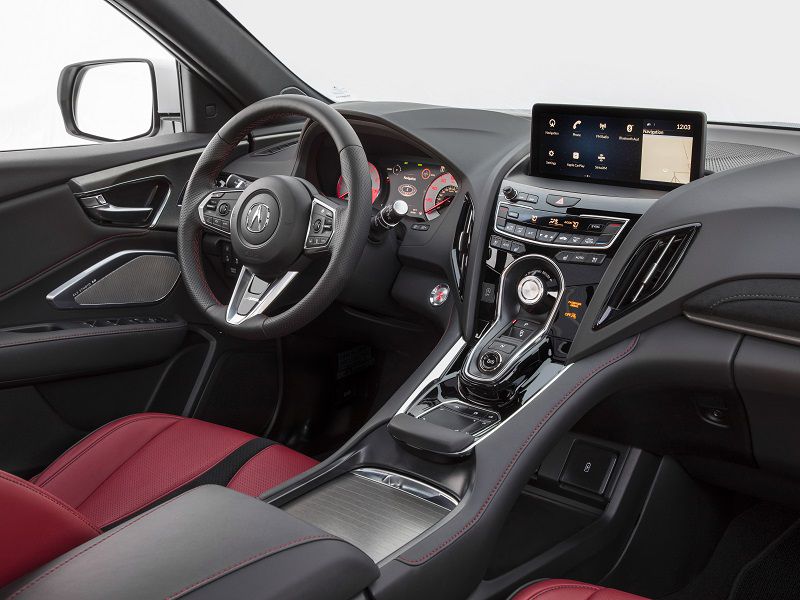
Photo by Acura
Comfort for Two and Room for Cargo to Accrue
Front seat comfort is exceptional thanks to standard 12-way power adjustment and heated cushions. Our A-Spec test car also had ventilated front seats, promising extra comfort in sweltering weather. Rear seat comfort is elusive because of a low, flat cushion and a backrest angle with too much recline. The result is a serious lack of support. Heated rear cushions are available in Advance and PMC Edition versions of the SUV.
Behind the back seat, the RDX supplies 29.5 cubic feet of cargo room. That doesn’t sound generous, but in addition to a good amount of floor space the RDX supplies three large compartmentalized storage trays under the trunk floor, plus a well to the left perfect for carrying items you’d prefer did not roll out of the vehicle when you open the liftgate. Fold the back seat down, and you’ll create 58.9 cubic feet of volume. Acura claims an additional measurement of 79.8 cubic feet for maximum cargo space, which sounds impressive until you realize it’s based on moving the front seats all of the way forward and stuffing the resulting second-row floor space full of your things. Not very realistic.
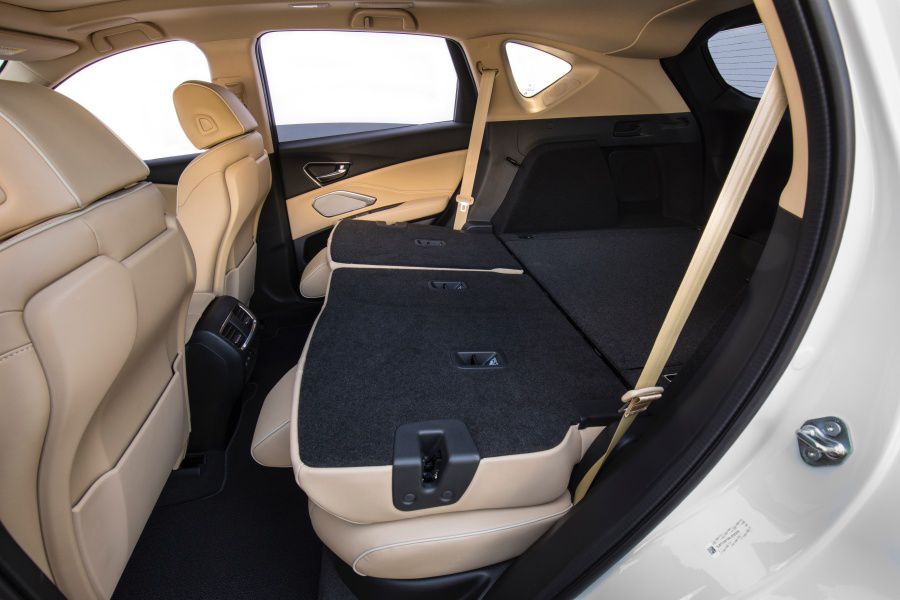
Photo by Acura
Reinventing the Infotainment Wheel
From feature, appearance, and technological sophistication standpoints, the Acura RDX’s infotainment system is thoroughly modern. Equipped with Apple CarPlay, Android Auto, a Wi-Fi hotspot, and AcuraLink connected services, the system is made for over-the-air software updates that keep it fresh, which should improve long-term owner satisfaction. Four different AcuraLink plans are available. The Basic plan is complimentary and includes a Last Mile navigation function that directs you to your final destination via a smartphone app. The Security plan is free for the first year and provides automatic collision notification, emergency calling, and quick access to roadside assistance.
Free for six months, the Remote plan adds remote engine starting, safe teen driver settings, a find-my-car function, and an Amazon Alexa skill complete with Key by Amazon in-car delivery service. Finally, the Concierge plan provides a personal assistant to help with a variety of tasks. Unfortunately, Acura’s True Touchpad Interface (TTI) takes plenty of acclimation before it becomes second nature. Even then, after you regularly remember that it doesn’t work like the trackpad on your laptop, you’ll still spend an inordinate amount of time attempting and visually confirming proper selection and activation of on-screen functions. But, if you choose A-Spec trim or higher, you’ll enjoy a terrific 16-speaker Acura/ELS premium sound system with which you can soothe your frustration.
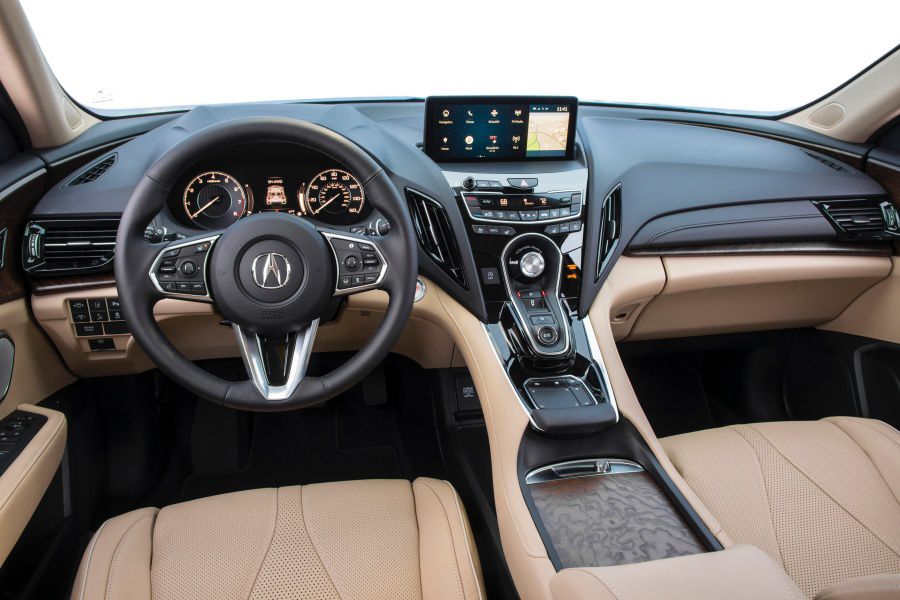
Photo by Acura
Safe and Secure
Every 2021 RDX is equipped with AcuraWatch, a collection of advanced driving assistance systems that exhibits an average degree of refinement, smoothness, and accuracy. Also, the RDX’s AcuraWatch package is not as comprehensive as what the company just introduced for the redesigned 2021 TLX sedan, so perhaps this SUV will see an upgrade next year.
If you want blind-spot and rear cross-traffic warning systems (and we highly recommend them), you’ll need to skip the base RDX for any of the other versions of the SUV. A head-up display and surround-view camera system are also offered for the RDX, but only on Advance and PMC Edition models. If all of this technology fails to prevent an accident, know that the Acura RDX is a safe SUV. It earns a “Top Safety Pick+” rating from the Insurance Institute for Highway Safety and an overall five-star rating from the National Highway Traffic Safety Administration.
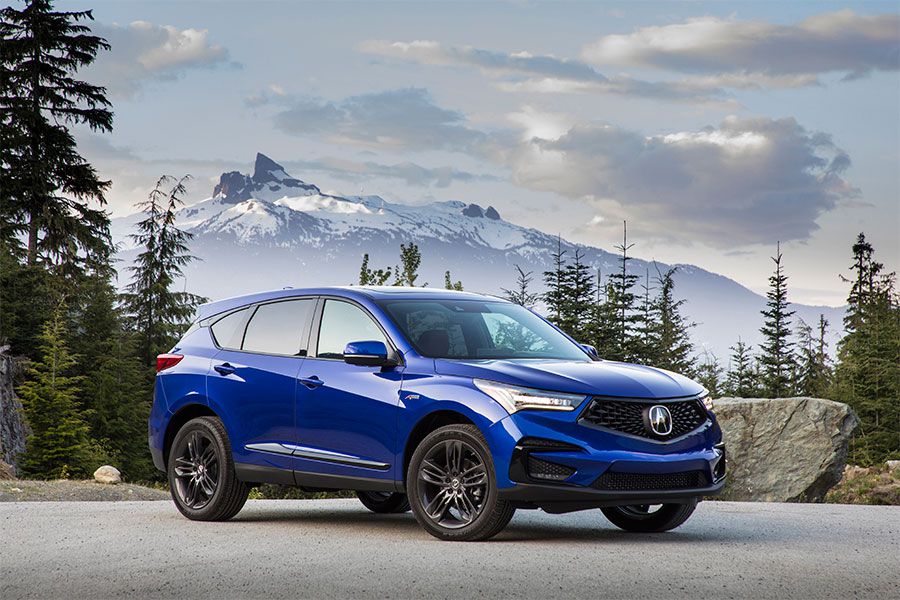
Photo by Acura
Torque-Rich Turbo
Acura offers a single powertrain in the 2021 RDX. It includes a turbocharged 2.0-liter four-cylinder engine generating 272 horsepower at 6,500 rpm and 280 lb-ft of torque starting at a low 1,600 rpm and remaining available all the way to 4,500 rpm. The engine drives the front wheels through a 10-speed automatic transmission with a Sport mode and paddle shifters on the steering wheel. Torque-vectoring SH-AWD is optional, and drivers can select among Comfort, Sport, Sport+, and Snow driving modes using the Integrated Dynamics System control knob in the center of the dashboard.
Despite the RDX’s two-ton curb weight, this powertrain is well-matched to the SUV, providing robust acceleration that drivers can enhance by choosing one of the Sport driving modes. The paddle shifters are not terribly rewarding, though, in part because they don’t match revs when the driver downshifts. According to the EPA, the RDX SH-AWD should get 23 mpg in combined driving. During testing, we averaged 21.2 mpg.
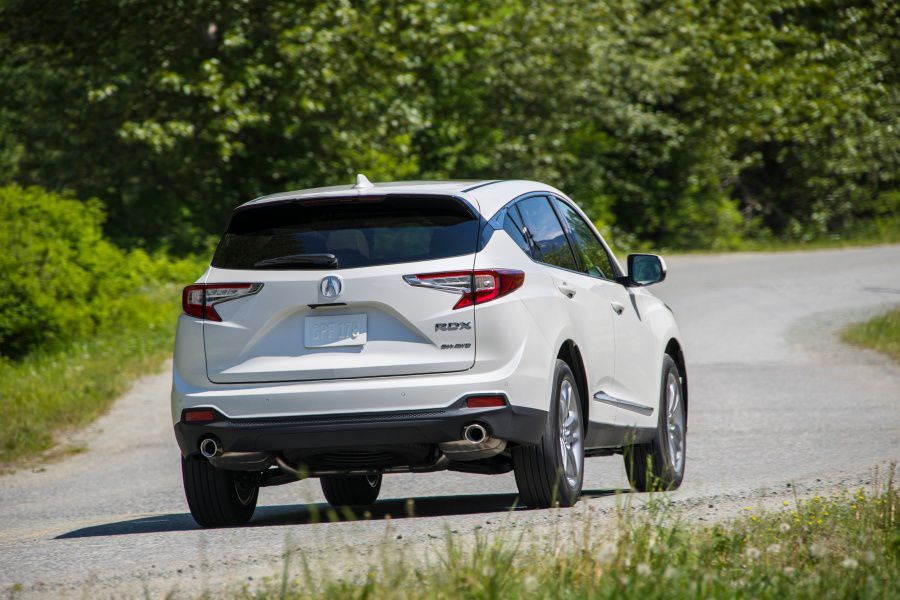
Photo by Acura
Addictive Driving Dynamics With SH-AWD
We recommend getting the RDX’s optional SH-AWD even if you have no plans to drive in snow or mud. It can put up to 70% of the engine’s power to the rear axle, and all of that transferred power to one or the other of the rear wheels. This creates the torque-vectoring effect leading to Acura’s claimed “super handling.”
Since A-Spec trim adds nothing more substantial than larger 20-inch wheels and 255/45 all-season performance tires to affect handling capability, it can’t cash the checks the racy styling writes. A summer performance tire option would help, as would the adaptive damping suspension that comes with the RDX Advance and PMC Edition models. Fortunately, the standard state of tune is tight, providing a solid feel for the road and secure handling. There’s no getting away from the RDX’s heavier curb weight and higher center of gravity in comparison to the new Acura TLX sedan, but for an SUV right off the factory floor, it runs remarkably fast on twisty mountain roads while delivering an agreeable ride on city streets, suburban boulevards, and Interstate highways. No matter where you drive it, though, you’ll find yourself clipping apexes and getting on the gas just to feel how the SH-AWD digs in and points the RDX in the right direction. It’s quite addictive.
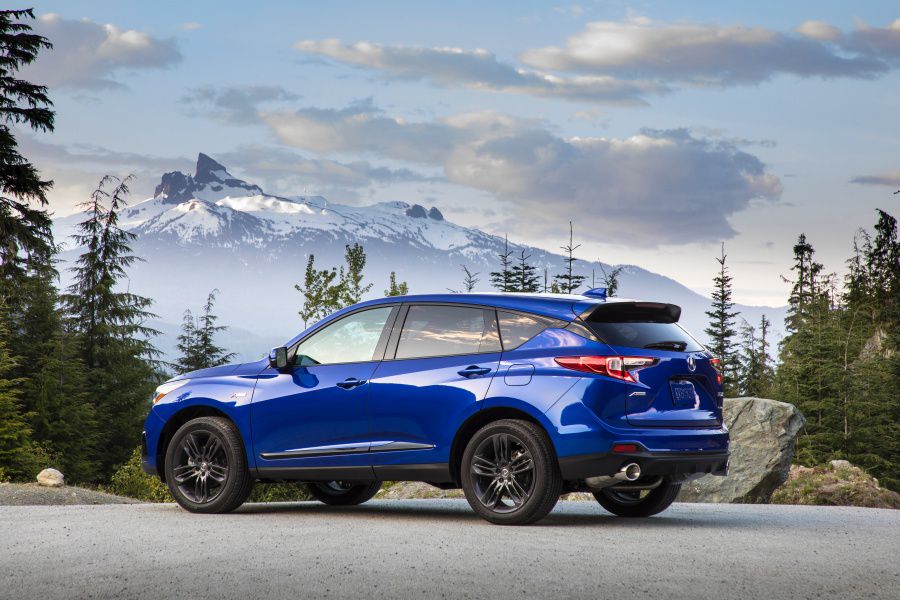
Photo by Acura
Acura RDX Competitors
Is Acura a luxury brand, or it a premium brand? Your answer to this question produces different competitive sets for the 2021 RDX.
In the former camp, you have the Audi Q5, BMW X3, Jaguar F-PACE, and Mercedes-Benz GLC. In the latter, there is the redesigned 2021 Buick Envision, plus the Infiniti QX50, Lincoln Corsair, and MINI Countryman. From our vantage point, the Acura RDX actually splits the difference between all of these compact crossovers, delivering compelling design, impressive performance, high quality, and terrific utility, all at a competitive price.
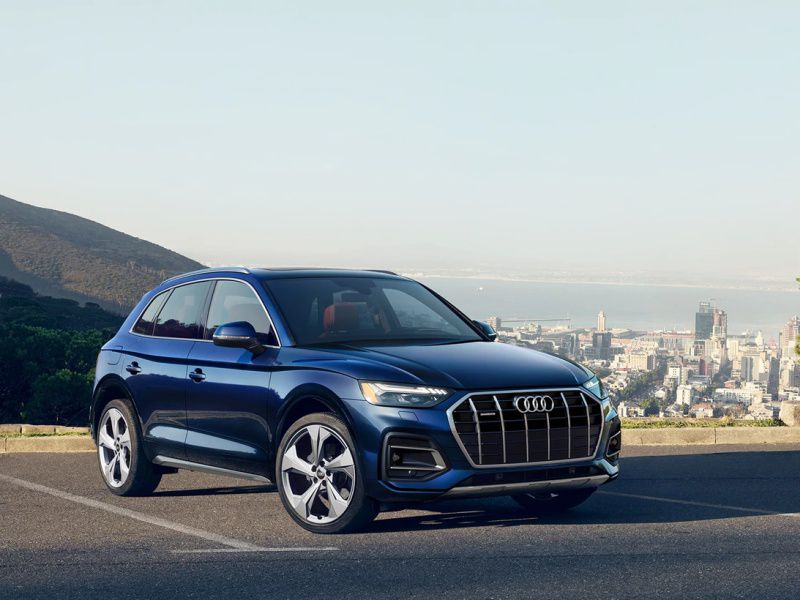
Photo by Audi
Acura Is Getting Back to Basics
Acura is in the process of rebuilding itself. With the company’s excellent NSX sports car serving as a six-figure flagship, the automaker is consolidating the rest of its lineup into small and mid-size cars and SUVs that hearken back to the brand’s early days of precision-crafted performance.
The current-generation RDX was the first Acura to get this new philosophical treatment, followed by the 2021 TLX and soon, the redesigned 2022 MDX. Next up is the positively geriatric ILX compact sedan, which after nearly a decade on the road is still based on the previous-generation Civic that went out of production after the 2015 model year. Yikes. Once this transformation is complete, if our experiences driving the RDX and TLX are any indication, Acura will offer a small but formidable lineup of premium vehicles with a penchant for performance.
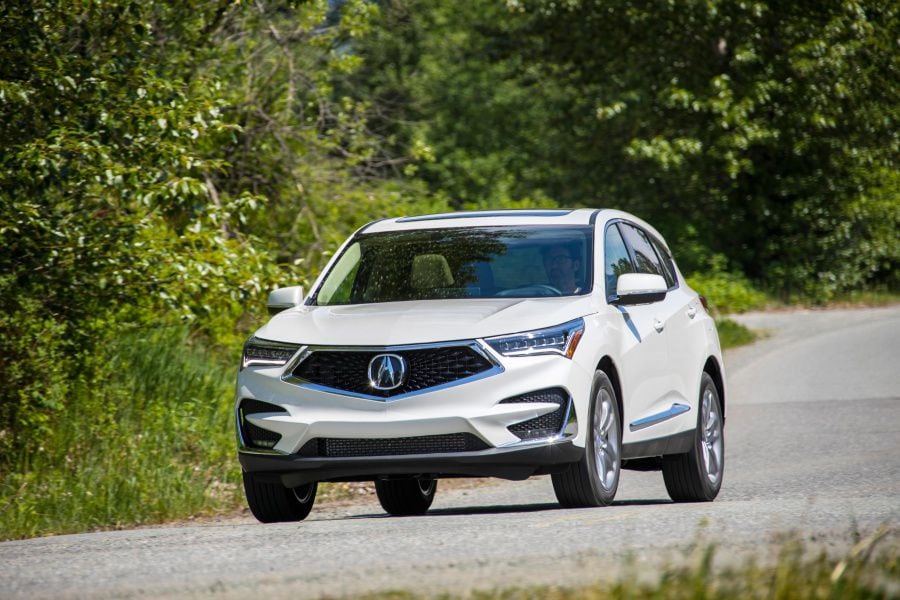
Photo by Acura